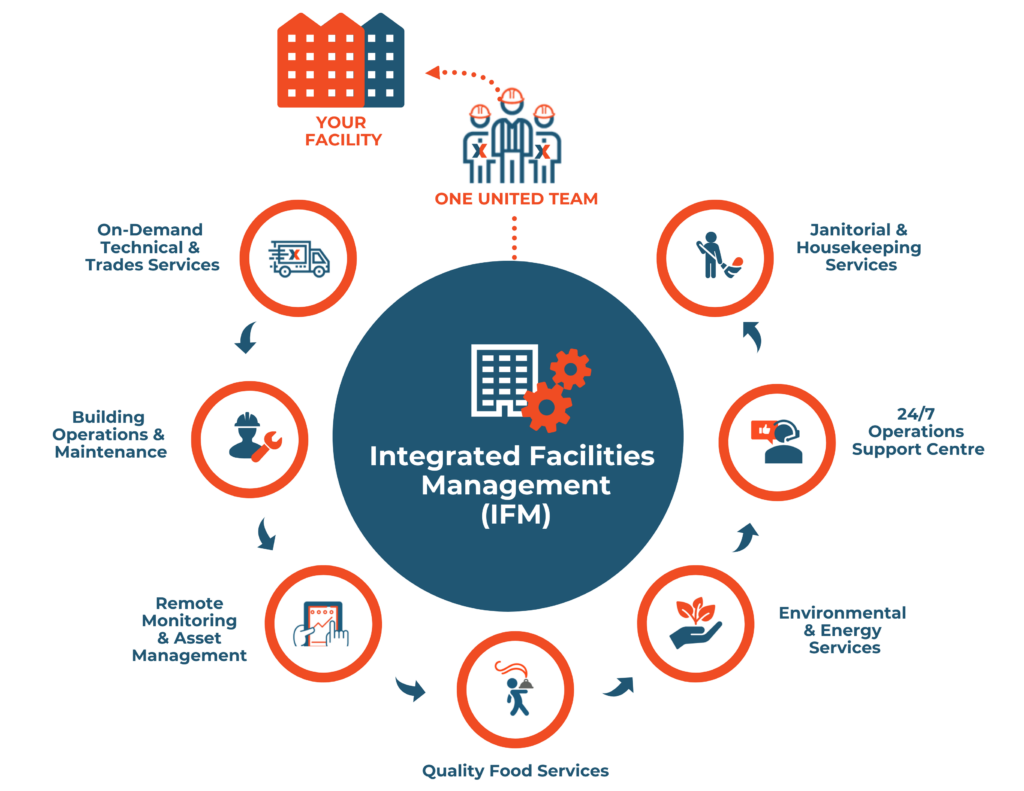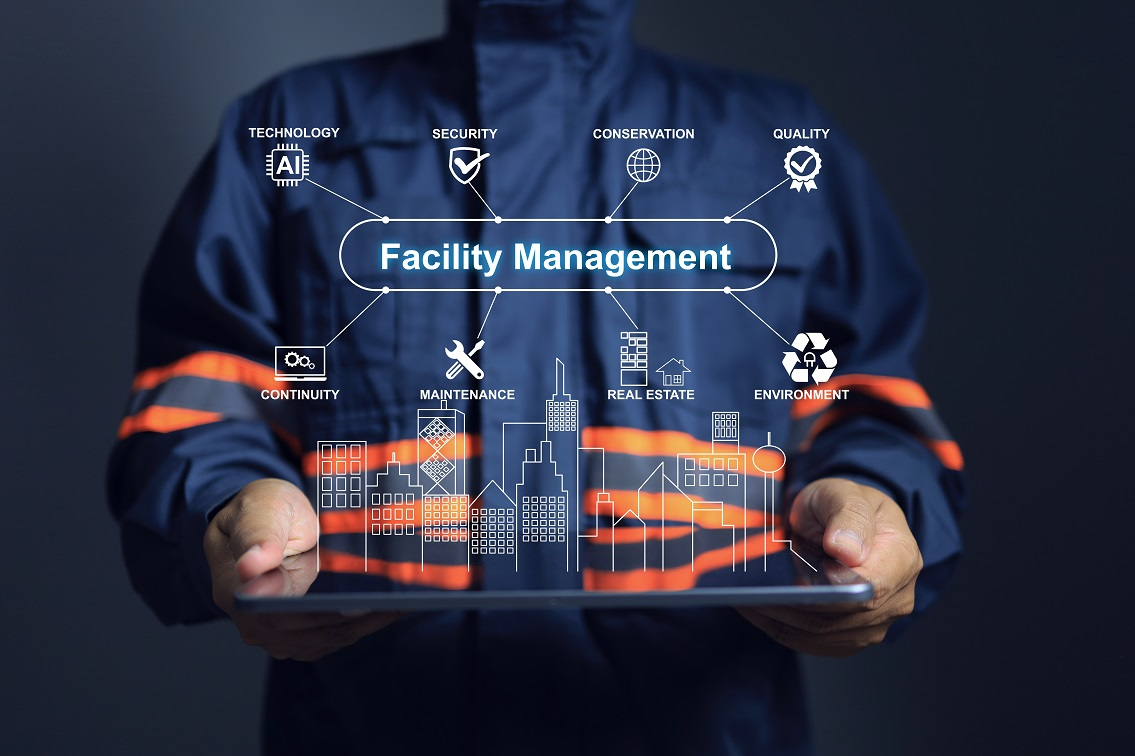The Crucial Overview to Center Administration: Techniques for Success
Facility administration plays a vital function in the general success of an organization, functioning as the backbone that sustains performance, efficiency, and security. By employing critical techniques such as integrated technical services and fostering cross-departmental cooperation, organizations can dramatically improve their operational structures. The subtleties of efficient center management expand beyond plain logistics and require a thorough understanding of both measurable and qualitative metrics. As we discover these necessary strategies, a closer exam exposes just how they can transform not simply facilities, yet the very culture within a company itself. What might these transformations resemble in method?
Comprehending Center Monitoring
What comprises reliable center monitoring? Effective facility management encompasses the coordination of various organizational functions to guarantee that built environments are secure, reliable, and for efficiency. It integrates the principles of design, service, and engineering administration to create a seamless functional circulation within a company.
Crucial element of center management include room planning, upkeep monitoring, and compliance with health and wellness and security laws. Space preparation concentrates on optimizing the use of physical sources to support organizational objectives, while upkeep management guarantees that facilities are maintained in optimum problem, making best use of life expectancy and reducing operational expenses. Conformity with regulatory and legal standards is important, as it safeguards the organization against prospective liabilities and improves its track record.
Moreover, efficient facility administration depends on the tactical use technology, such as Building Monitoring Equipment (BMS) and Computer-Aided Center Administration (CAFM) tools. These innovations help with real-time monitoring of structure systems and simplify upkeep processes (Facility Management). Ultimately, a comprehensive strategy to center administration not only promotes functional effectiveness but also cultivates a favorable environment for employees and site visitors alike, driving total business success

Key Techniques for Optimization
Enhancing facility monitoring needs a critical strategy that straightens functional experiment organizational goals. To achieve this, the very first crucial technique is the execution of incorporated technological services. Using innovative software systems permits real-time tracking of center procedures, facilitating data-driven decision-making and improving general effectiveness.
Second of all, normal analyses of center performance are important. Carrying out regular assessments and audits makes it possible for center supervisors to recognize locations that require improvement, ensuring that resources are assigned efficiently. This positive technique assists in minimizing downtime and enhancing service delivery.
Another critical strategy is fostering collaboration across divisions. By urging open interaction in between teams, facility managers can much better straighten their methods with service goals, resulting in improved operational harmony. Furthermore, engaging staff in training programs promotes a society of responsibility and improves their ability to contribute to optimization initiatives.
Enhancing Security Procedures
Strengthening safety and security methods is necessary for producing a protected environment within centers. A detailed safety method not just safeguards visitors and employees yet likewise enhances functional effectiveness. Facility Management. To attain this, center managers have to carry out normal danger assessments to recognize prospective hazards and make sure that proper steps remain in location

In addition, clear interaction networks need to be developed to report security worries immediately. This consists of producing an obtainable system for staff members to articulate prospective risks or events without worry of reprisal. Additionally, leveraging technology can enhance precaution; for instance, applying security systems and accessibility controls aids check center activities and restrict unauthorized access.
Finally, conformity with neighborhood policies and sector standards is non-negotiable. this link Regular audits and evaluations of safety methods make sure positioning with current legislations and best techniques. By prioritizing these strategies, center managers can grow a culture of safety and security that secures all stakeholders and ultimately adds to the organization's success.
Improving Office Environment
A favorable workplace setting substantially enhances worker spirits and efficiency, making it a crucial emphasis for facility administration. To create such an atmosphere, center managers must focus on a number of vital elements, consisting of ergonomics, looks, and employee interaction.
Ergonomic factors to consider are important to decrease physical strain and discomfort. This includes giving adjustable furniture, correct lighting, and sufficient room for movement. These adjustments can cause decreased absenteeism and boosted work complete satisfaction.
Appearances navigate to these guys play an important function fit the office ambience. Utilizing shade psychology, all-natural lighting, and greenery can cultivate a stimulating and welcoming environment. Thoughtfully created rooms can enhance creativity and improve overall well-being.
Furthermore, motivating worker interaction with comprehensive decision-making processes can improve the sense of ownership and belonging. Gathering feedback on workplace improvements and involving employees in the design process can lead to a more customized setting that fulfills their demands.
Last but not least, advertising health efforts, such as wellness programs and relaxation spaces, can further add to an encouraging office society. By concentrating on these techniques, facility supervisors can properly boost the office atmosphere, driving both employee complete satisfaction and organizational success.
Determining Success in Facilities
Determining success in facility management calls for a thorough strategy that evaluates both qualitative and measurable metrics. Quantitative metrics usually consist of essential performance signs (KPIs) such as space application prices, energy intake, maintenance prices, and occupancy degrees. These metrics supply a clear image of functional efficiency and economic performance, permitting facility supervisors to determine locations for enhancement and benchmark versus industry criteria.
Qualitative metrics, on the other hand, concentrate on individual satisfaction and worker engagement. Studies and feedback devices can evaluate just how well the facilities fulfill the requirements of owners, helping to analyze the overall office environment. This element is crucial, as a pleased labor force is frequently connected to enhanced performance and retention rates.
To properly determine success, facility supervisors should likewise consider incorporating technology, such as developing management systems and information analytics devices, to gather and assess appropriate information. Consistently evaluating both collections of metrics permits a much more well balanced view of performance and educates tactical decisions. Inevitably, an effective facility management technique rests on a commitment to continuous enhancement, ensuring that both operational performances and customer complete satisfaction are focused on.

Verdict
Finally, reliable center monitoring is vital for improving organizational efficiency. By implementing incorporated technical services, carrying out regular assessments, and cultivating cooperation across divisions, companies can attain optimal source appropriation and functional performance. Focusing on security protocols and boosting work environment atmospheres further add to raised staff member fulfillment. Determining success through both quantitative and qualitative metrics allows for continual improvement, inevitably leading to reduced functional prices and a more efficient business atmosphere.
Center administration plays a critical role in the general success of an organization, serving as the foundation that supports productivity, safety, and efficiency.Trick components of center administration include space preparation, upkeep monitoring, and conformity with health and wellness and safety regulations.Furthermore, effective center administration depends on the tactical use of technology, such as Structure Administration Systems (BMS) and Computer-Aided Facility Monitoring (CAFM) tools. Ultimately, a comprehensive approach to center administration not only advertises operational navigate to this site efficiency yet likewise fosters a favorable environment for site visitors and workers alike, driving overall business success.
Eventually, a successful center management approach hinges on a dedication to constant improvement, ensuring that both functional efficiencies and customer complete satisfaction are prioritized.
Comments on “Facility Management Solutions-- Enhance Your Building's Performance”